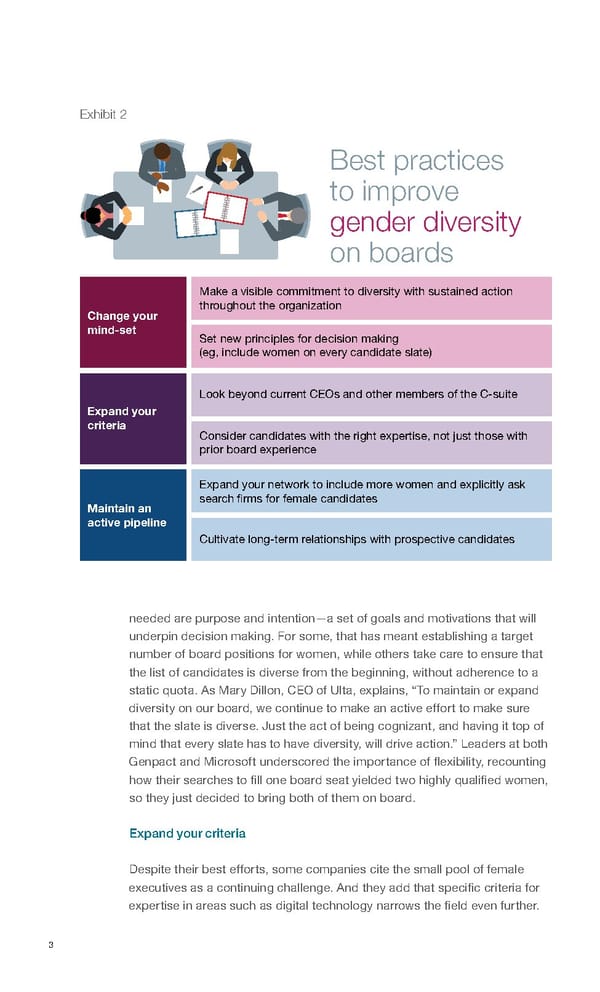Q1 2017 Women in boards Exhibit 2 of 2 Exhibit 2 Best practices to improve gender diversity on boards Make a visible commitment to diversity with sustained action Change your throughout the organization mind-set Set new principles for decision making (eg, include women on every candidate slate) Look beyond current CEOs and other members of the C-suite Expand your criteria Consider candidates with the right expertise, not just those with prior board experience Expand your network to include more women and explicitly ask Maintain an search firms for female candidates active pipeline Cultivate long-term relationships with prospective candidates needed are purpose and intention—a set of goals and motivations that will underpin decision making. For some, that has meant establishing a target number of board positions for women, while others take care to ensure that the list of candidates is diverse from the beginning, without adherence to a static quota. As Mary Dillon, CEO of Ulta, explains, “To maintain or expand diversity on our board, we continue to make an active effort to make sure that the slate is diverse. Just the act of being cognizant, and having it top of mind that every slate has to have diversity, will drive action.” Leaders at both Genpact and Microsoft underscored the importance of flexibility, recounting how their searches to fill one board seat yielded two highly qualified women, so they just decided to bring both of them on board. Expand your criteria Despite their best efforts, some companies cite the small pool of female executives as a continuing challenge. And they add that specific criteria for expertise in areas such as digital technology narrows the field even further. 3
 How-to-accelerate-gender-diversity-on-boards Page 2 Page 4
How-to-accelerate-gender-diversity-on-boards Page 2 Page 4